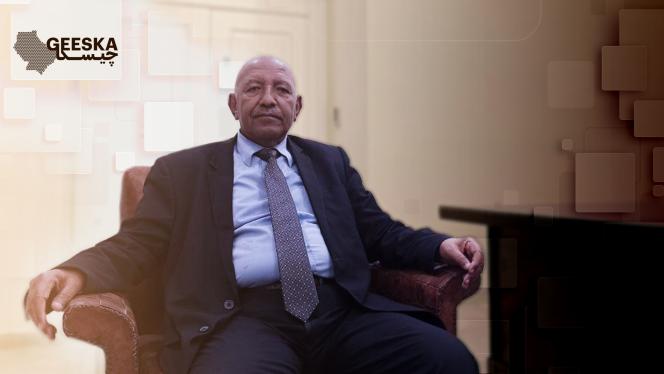Thursday 21 November 2024
Islam in Ethiopia

Professor Adam Kamil Faris was born in the rural farming community of Gefare in Semen Wollo, Ethiopia. He moved to Saudi Arabia at the age of seven, where he completed his primary and secondary education in Mecca. In 1982, he graduated with distinction from King Abdulaziz University in Jeddah with a BA in Public Administration, Political Science, and Economics. He later pursued advanced studies, earning both an MA and a PhD in the role of Najashi in shaping early Islamic history, which have significantly informed his research on Islam in Ethiopia and how the country has historically engaged with the broader Muslim world.
Ethiopia’s engagement with Islam has been ambivalent. Many Muslims will be familiar with the stories of Prophet Muhammad’s companions seeking refuge there for more than a decade, including the future caliph, Uthman.
However, as Islam spread across the Horn of Africa and into Ethiopia, the relationship between the empire and its Muslim neighbours became more layered and complex. Ethiopia has often presented itself to outsiders as a “Christian Island” surrounded and besieged by violent Muslim neighbours, tropes which Europeans found matched their own prejudices, which influenced the way they engaged with it.
Ethiopian emperor’s then proceeded to depict Islam and Muslims as their “Other”, to cultivate and maintain external sympathy. Terje Østebø, a Norwegian historian of religion in Ethiopia, has as a result, called it a “European construct”: “there is little proof Ethiopia needed to view Islam as a threat”, he writes. Wars with neighbouring Muslim sultanates also created domestic internal fears about the loyalties of Ethiopia’s Muslim subjects. Emperor Yohannes, for example, decided that mass conversion and assimilation were the answer. This persisted in other forms through the 19th and 20th centuries with attempts to erase the Muslim presence or culturally assimilate majority-Muslim groups in Ethiopia.
Adam Kamil Faris speaks to Geeska about this history as well as where Ethiopia’s Muslim community finds itself today.
Ibrahim Osman: Could you elaborate on the historical ties between Ethiopia and the Arab world, especially the origins of the term “Habesha”?
Adam Kamil: The connections between Ethiopia and the Arab world are deep and complex, with at least twelve notable historical links. The term “Habesha,” meaning “mixed race,” originally referred to the blending of Cushitic and Semitic lineages that formed a distinct ethnic group. Historically, the term also relates to a mountainous area in Yemen known as the Mountains of Habesha. Additionally, there was a tribe near Mecca called the Habeesh, which allied with the Quraysh to defend the city, reinforcing the term’s Arabic roots and cultural resonance.
Trade and social interactions established these connections long before the advent of Islam, continued through its spread, and persist to the present day. The relationship was so strong that nearly every household in Mecca included a member of Habeshan descent. They were known for their skill in archery and so Habeshans frequently guarded trade routes. When the Prophet Muhammad faced persecution, he sent members of his household to seek refuge under the Ethiopian King Ashama bin Abjar (also known as the Negus), who granted them freedom to practise their faith. This was an early instance of diplomatic ties that grew stronger when the Prophet appointed Ja’far bin Abi Talib as an official representative to Ethiopia, where he remained for 16 years on behalf of the Muslim migrants.
IO: What significance does Abyssinia hold in Islam?
AK: Abyssinia holds a special place in Islamic history as one of the first lands to offer sanctuary to Muslims, even before Mecca or Medina. The Habeshan people played key roles throughout the Prophet’s life. He was breastfed by a Habeshan woman, and Bilal ibn Rabah, a close friend and former slave of Habeshan descent, became the first muezzin (caller to prayer). Habeshan influences even appear in the Qur’an, with thirty words borrowed from their [Amharic] language and twenty-three verses revealed concerning or praising the Habeshan people. The verse on racial equality, inspired by an event where Bilal called for prayer while standing on the shoulders of two Qurayshi men, reflects this connection. These links illustrate the respect and influence of the Habeshan people and language within Islam.
IO: In what ways did King Najashi’s actions shape Abyssinia’s tradition of religious tolerance and openness to migration?
AK: King Najashi set a powerful precedent of religious tolerance in Abyssinia. Throughout history, the region has been home to diverse religions, welcoming Jewish communities around 570 BCE, Christianity in 350 CE under King Ezana, and Islam in 615 CE. Najashi embodied this spirit of tolerance by providing refuge to early Muslims, and though his openness to religious diversity remained a distinctive feature of Abyssinia during and after his reign, the Orthodox Church always retained the upper hand in the country.
The Orthodox Church held significant influence over Abyssinian rulers, shaping perceptions of Abyssinia as a “Christian island” surrounded by non-Christians. Haile Selassie’s reign highlighted this legacy, as he viewed Muslims as a source of tax revenue; however, unlike his predecessors, he stopped short of active persecution. Nevertheless, Muslims remained marginalised, heavily taxed, and often denied education and other basic rights guaranteed to the Christian majority. So, while religious tolerance has a strong foundation, it was overshadowed by a history of marginalisation.
IO: How do Ethiopian Muslims fare today compared with in the past?
AK: Yes, there have been significant changes. Ethiopian Muslims now have greater access to education and professional opportunities, and many hold high-ranking positions in government—something unheard of just a few decades ago. Under Mengistu, the church’s influence over the state was limited due to his ideological commitments to socialism and stance against its interference. During Meles Zenawi’s era, policies aimed at dividing the Muslim community and state-led attempts to impose leaders on it often led to internal conflicts. However, the current government has been more inclusive. Four years ago, it re-established the Ethiopian Islamic Affairs Supreme Council as a legal entity, giving Muslims representation and a voice.
IO: In a country with a strong Orthodox Christian cultural dominance, how can Ethiopian Muslims balance their religious and national identities?
AK: The Orthodox Church once held immense power, controlling leadership decisions and shaping public policy. This created challenges for Ethiopian Muslims, who often had to adopt Christian cultural norms in order to integrate. The church’s influence on the education system, which marginalised Muslim identity, led to a complex identity crisis for many Muslims.
However, today, Ethiopian Muslims can use the lessons of history to shape their future. Education will be key to building a stronger community that can coexist within a unified national identity. Moving beyond ethnic and sectarian divisions will help ensure that Ethiopian Muslims have a stronger place in the nation’s cultural fabric.
IO: Can Ethiopian Muslims unite on the basis of religion, despite their ethnic diversity?
AK: Throughout history, Ethiopian Muslims have been marginalised because of their religious identity rather than their ethnic background. Some Muslim communities have ethnic ties to powerful groups in the country, for example Tigrayan and Amhara Muslims. This religious bond has created a foundation for unity that can transcend ethnic divisions. While marginalisation still exists, it is not as severe as in past regimes, especially during the imperial period. Today, Muslims have access to the tools needed for self-empowerment, including education and representation. We don’t need external liberation if we have the means to uplift ourselves, and many of those means are now available.
IO: Ethiopia has a rich Islamic history that often goes unrecognised, leaving Muslims to exist in a detached and unhistoric space. How can today’s generation reconnect with this heritage and bring about change in this regard?
AK: Today’s Ethiopian Muslim youth need to be resilient and proactive in reclaiming their history. This requires education—not only in religious studies but also in fields like engineering, medicine, and especially the social sciences and humanities. By excelling academically, they can help bring Ethiopia’s Islamic history to light, study it critically, and reclaim it for future generations. This educated Muslim community can preserve and share their heritage while contributing meaningfully to Ethiopian society.










